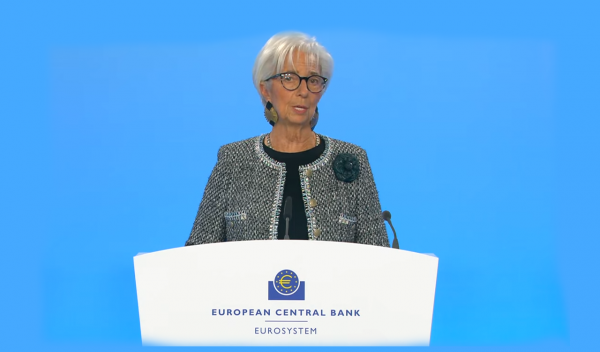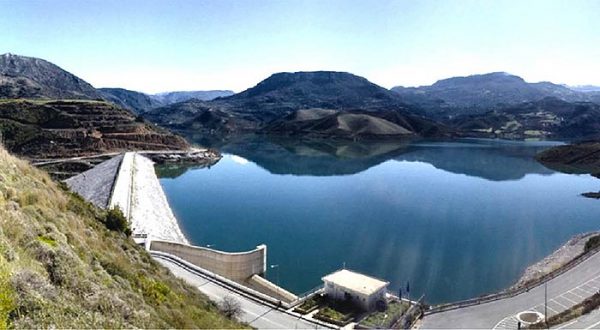
Greece is one of the EU countries whose productivity is significantly below the EU average. At the same time it presents the largest and most persistent disparities between its regions, with Attica significantly exceeding the efficiency and productivity of production factors ( – TFP) of the rest of the country.
At the same time, it is noted that for Greece, significant benefits can arise from integrated spatial planning for the management of urbanization and high-intensity land investments at the regional level.
The above results from the study of KEPE published today, which is a comparative analysis of Total Factor Productivity (TFP), and the technological gap in European regions during the period 2009-2016.
In analyzing the data, the authors of the study identified significant differences in the evolution of efficiency over time between regions, indicating the existence of a multi-speed convergence process within the European Union. This process, they point out, mainly reflects the slowdown in productivity in the most developed countries / regions and the way in which the economies of the countries / regions of Eastern Europe are lagging behind.
The results of the study show that the average level of technical efficiency of the European regions remained essentially the same (around 80%) during the period 2010-2016. There are some significant inequalities, as regions of Central and Western Europe had efficiency rates above 90%, compared to the much less effective regions of Eastern and Southern Europe. In addition, there are significant interregional productivity gaps within specific countries, such as the United Kingdom, Italy, Spain, and Greece.
Average efficiency in Greece at 54%
Specifically, in the case of Greece, the efficiency of all regions, which averaged 54% during the period 2010-2016, is significantly lower than the average efficiency of the other countries of the European Union. The maximum efficiency value (66%), which corresponded to Attica, was more than 20 percentage points higher than the minimum efficiency value corresponding to the Peloponnese (44%) and was the 8th lowest efficiency value in the whole EU (in 2016). Central Macedonia and the island regions of the South Aegean, Crete, the North Aegean (in 2010) and the Ionian Islands (in 2016) had efficiency values above the national average.
The results of the study show that the average level of technical efficiency of the European regions remained essentially the same (around 80%) during the period 2010-2016. There are some significant inequalities, as regions of Central and Western Europe had efficiency rates above 90%, compared to the much less effective regions of Eastern and Southern Europe. In addition, there are significant interregional productivity gaps within specific countries, such as the United Kingdom, Italy, Spain and Greece.
The findings show that the relationship between cumulative savings and efficiency is complex and dependent on the spatial context of the analysis. On the one hand, regional efficiency is positively affected by the increasing rate of geographical diffusion of land use development beyond a point, the functional concentration of land uses as well as the sectoral concentration of economic activities, the promotion of human capital and the strengthening of access to markets (and other sizes of geographical centrality). On the other hand, important sources of inefficiency are the rate of increase of work density beyond a point, indicating congestion effects, and the increased degree of job specialization, compared to the European average degree of job specialization.
The results of the study can provide useful policy-making advice, it is pointed out, which is tailored to the particular characteristics, needs and comparative advantages of each European region, so as to address sources of inefficiency and inequality, among them. In particular, the proper utilization of spatial savings economies, the improvement of connectivity – through strategic investments in natural infrastructure – and the promotion of human capital are crucial factors for the sustainable development and cohesion of European regions. To this end, the design and implementation of investment programs and regional-sectoral plans must include policy tools that will work collaboratively with each other. Finally, significant efficiency gains can emerge for Greece from integrated spatial planning for the management of urbanization and high-intensity land investment at the regional level.
In the context of the proposals and the treatment of the coronavirus
The study highlights some of the major policy challenges at European and national level during the 2021–2027 programming period. These include the inclusion of targets and criteria to increase productivity and efficiency, reduce technological gaps, and accelerate the convergence of regions, both at European and national level.
The policy proposals are also relevant to current or future developments that are expected to significantly affect the productivity of the regions, either through the redistribution of land for agricultural, industrial, service and housing activities, or through the reorganization of value chains. Among other things, these developments are related to technological innovations (eg, autonomous vehicles, advanced processing technologies, teleworking) and actions to prevent or control the spread of communicable diseases, such as COVID-19, and to strengthen resilience to climate change.
Latest News

DM Dendias: We talk With Turkey But We Always Bring Up Their Unacceptable Positions
Second and last day of closely watched conference, entitled 'Metapolitefsi 1974-2024: 50 Years of Greek Foreign Policy', also included appearances by PM Mitsotakis, Ex-PM Tsipras and PASOK leader Nikos Androulakis, among others

Rhodes Airport Tops Fraport Greece’s Regional Airports in 2024 Performance
According to Fraport's data, more than 35 million passengers (specifically 35.2 million) were handled by Fraport-managed airports during the 11 months.

European Central Bank Cuts Interest Rates by 25 Basis Points
It is the fourth cut of interest rates by Europe’s central bank, a move expected by the markets and financial analysts leading to the rate settling at 3%.

Airbnb: New Measures Add €600 in Extra Costs for Property Owners
Property managers face an immediate administrative fine of 5,000 euros if access to the inspected property is denied or any of the specified requirements are not met.

Economist: Greece Included in the Best Performing Economies in 2024
Meanwhile, Northern European countries disappoint, with sluggish performances from the United Kingdom and Germany.

EasyJet Expands Its Routes from Athens
The airline’s two new routes will be to London Luton and Alicante and they will commence in summer 2025.

Capital Link Forum Highlights Greece’s Economic Resurgence; Honors BoG Gov Stournaras
Capital Link Hellenic Leadership Award recipient, Bank of Greece Gov. Yannis Stournaras, an ex-FinMin, was lauded for his pivotal role during Greece’s economic recovery

Tourist Spending in Greece Up by 14%, Visa Card Analysis Shows
Greece’s capital Athens emerged as the most popular destination, recording a 17% increase in transactions with Visa cards, surpassing even the cosmopolitan island of Mykonos.

Inflation in Greece Unchanged at 2.4% in Nov. 2024
The general consumer price index (CPI) posted a 0.4% decrease in November compared to the previous month

2024 Christmas Holidays: Extended Shop Hours Schedule
The 2024 Christmas Holidays extended shop hours schedule commences on Thursday, December 12 and runs until the end of the year.

![Φυσικό αέριο: Δυναμικό come back του LNG στην Ελλάδα [γραφήματα]](https://www.ot.gr/wp-content/uploads/2023/01/OT_naturalgas-90x90.jpeg)












![Fraport: Πάνω από 35 εκατ. επιβάτες στα αεροδρόμια το 11μηνο – Πτώση στη Μύκονο [πίνακας]](https://www.ot.gr/wp-content/uploads/2022/06/fraport-90x90.jpg)


















![Φυσικό αέριο: Δυναμικό come back του LNG στην Ελλάδα [γραφήματα]](https://www.ot.gr/wp-content/uploads/2023/01/OT_naturalgas-600x474.jpeg)








 Αριθμός Πιστοποίησης Μ.Η.Τ.232433
Αριθμός Πιστοποίησης Μ.Η.Τ.232433